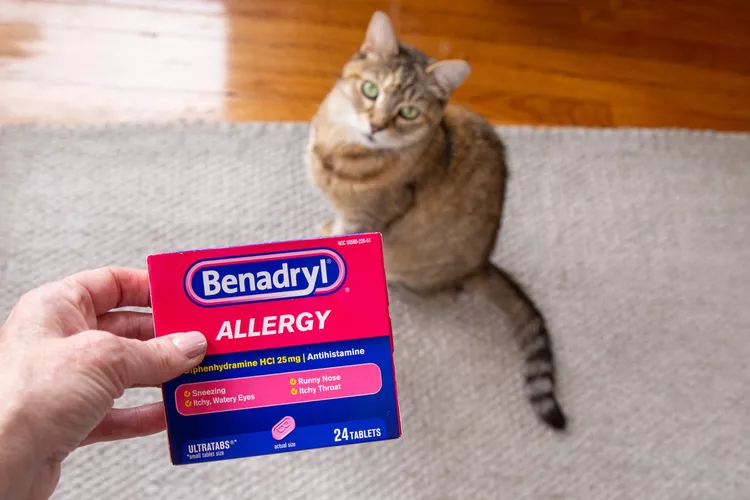
Benadryl is a medication that is sometimes recommended to be given to cats. While plain Benadryl is usually safe to give, it is important to know what exactly Benadryl is, exactly how much to give your cat, and when to know if your cat needs Benadryl. Plus, you need to consider whether it is safe to give Benadryl to cats with underlying or pre-existing medical conditions.
Always consult with a veterinarian before administering Benadryl to ensure it is appropriate for your pet. Additionally, monitor your cat closely for any adverse reactions after giving the medication.
Benadryl is the brand name for a drug called diphenhydramine hydrochloride. Benadryl is an over-the-counter antihistamine medication, so it does not require a prescription. This antihistamine can be purchased as tablets, capsules, liquid gels, and even liquid in multiple strengths or milligrams depending on your needs.
Benadryl is sometimes combined with other medications that can be toxic to cats. Because of this, you will need to be sure to read the package carefully when purchasing the drug to ensure that diphenhydramine, the active ingredient in Benadryl, is the only drug in the product you are purchasing for your cat. Generic diphenhydramine is also available, as well as a faster-acting injectable form that your veterinarian will have available. If you are considering the use of Benadryl to treat symptoms in your cat, please consult with your veterinarian first.
Since it is an antihistamine, Benadryl blocks the effects of histamine in the body. These chemicals are released in the body in response to an allergic reaction not only in cats, but also in people, dogs, and other animals. Benadryl treats the symptoms of an allergic response or allergies including watery eyes, runny noses, swelling, sneezing, itching, and more.
Cats that may take Benadryl are typically ones that have known allergies or are traveling in a car or airplane, but there are other reasons why your cat may be recommended to take it. Some specific examples of when Benadryl may be used as guided by your veterinarian are:
You should have some Benadryl on hand in your pet first aid kit if you have a cat, even if you never plan on traveling with it, or it doesn't have any known allergies. It is difficult, if not impossible, to predict when an insect will sting your cat and cause an allergic reaction. If you have Benadryl available, you may be able to lessen the allergic response that your cat would experience by giving your cat a dose. However, before using Benadryl or any over-the-counter medication, please consult with your veterinarian first.
Some allergic responses can be deadly. Some cats react so severely to insects or venomous reptiles that they cannot breathe without immediate veterinary care. This is especially true for brachycephalic or "smush face" breeds, like Persians, that already naturally have compromised airways without the added airway constriction that an allergic reaction can cause.
Benadryl is not safe for every cat to take. Some examples of when a cat should not take Benadryl include:
Typically, cats take 1 milligram of Benadryl for each pound of body weight two to three times a day. This means a 12.5-pound cat will take 12.5 milligrams (or half of a 25-milligram Benadryl tablet) up to three times a day, depending on your veterinarian's recommendation. Cats under 12.5 pounds may be more easily dosed using children's Benadryl liquid since it can be dosed more accurately; however, many cats may object to the bubblegum flavor. It is always important to make sure that diphenhydramine HCl is the only active ingredient in Benadryl.
Benadryl can cause sleepiness, dry mouth, or urinary retention and potentially cause some gastrointestinal upset, such as diarrhea and/or vomiting. In cats, it may also cause a paradoxical effect meaning that the cat becomes very excited or jittery instead of sleepy.
If too much Benadryl is given to your cat, it can cause lethargy or excitement. Occasionally, a cat may also develop a dry mouth, have respiratory depression, get seizures, go into a coma, or even die if a large enough dose is administered.
Before giving your cat any type of medication, supplement, or over-the-counter medication, you should always discuss it with your veterinarian.

Exploring the Different Types of Pet-Friendly Beaches
Are you looking for pet-friendly beaches? Learn about the different types of pet-friendly beaches, their locations, and tips for visiting them with your pet.
Exploring Pet-Friendly Wineries: Types, Locations, and More
Discover the different types of pet-friendly wineries, where to find them, and what to expect when you visit. Learn more with The Spruce Pets.
Why Is My Dog’s Eye Swollen?
If your dog's eye is swollen, she may need veterinary attention. The inflammation could be caused by allergies, an injury, or even a tumor.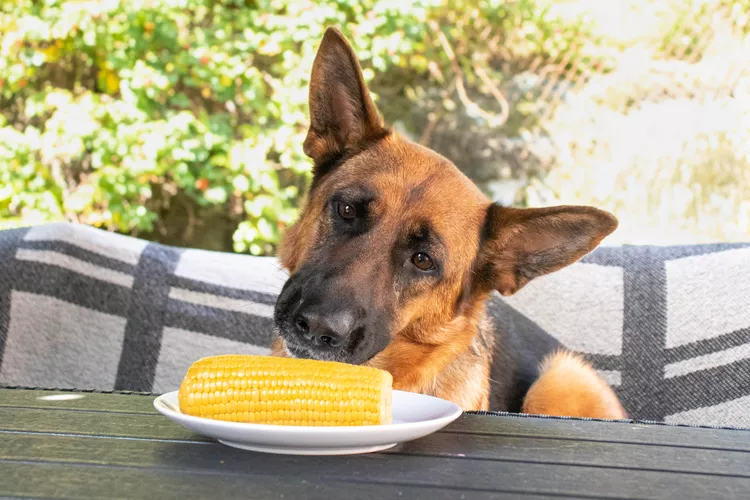
Can Dogs Eat Corn on the Cob?
Dogs love chewing on corn cobs, but this can cause serious harm. Learn about the dangers of corn cobs and find out what to do if your dog eats one.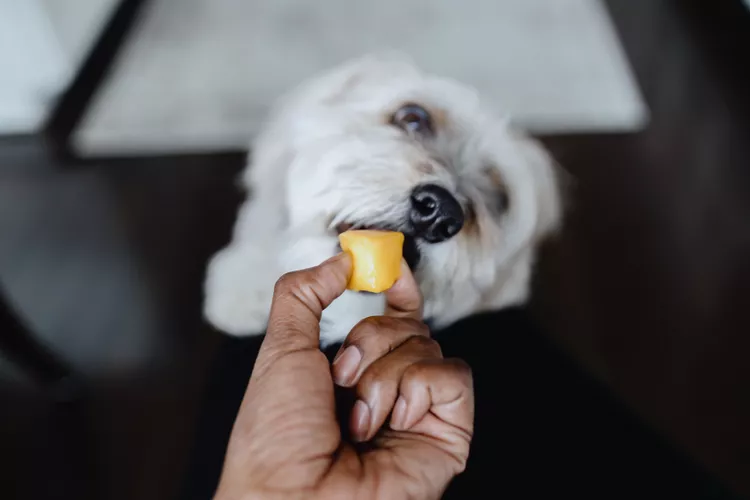
Can Dogs Eat Papaya? What to Know About Sharing This Tropical Fruit With Your Pup
Papaya is safe for dogs in moderation, and it can even provide some nutritional value for them. However, too much can cause digestive upset, and it's not suitable to share with dogs with certain health conditions.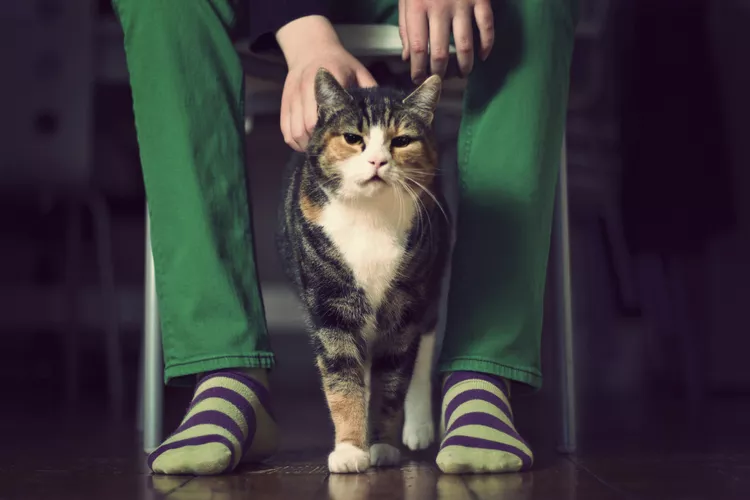
65 Irish Cat Names
Irish cat names can pay homage to historical places, local cuisine, famous Irish actors and musicians, or other wonderful aspects of the Emerald Isle.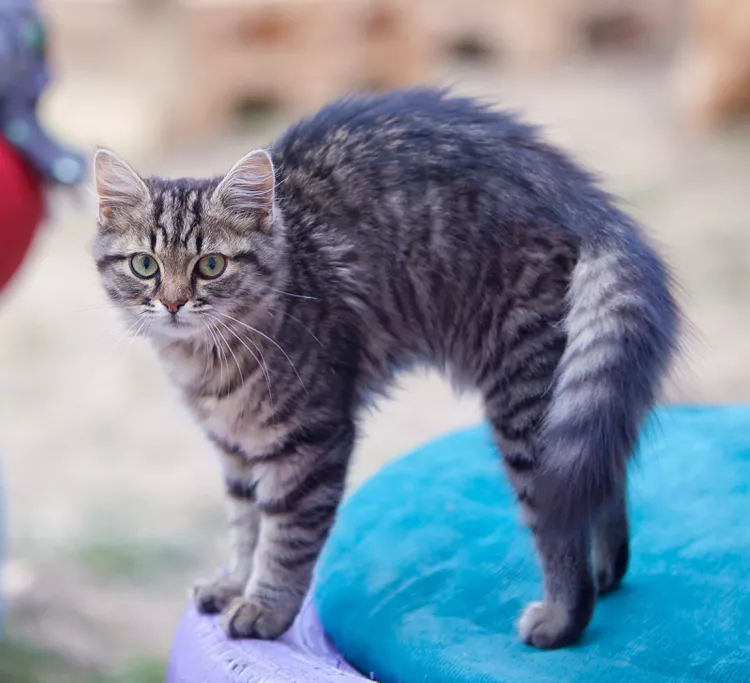
Feline Hyperesthesia Syndrome (FHS) in Cats
Rippling skin is more than dermal sensitivity in cats. It can be a sign of Feline Hyperesthesia Syndrome. Learn the causes, treatment, and prevention.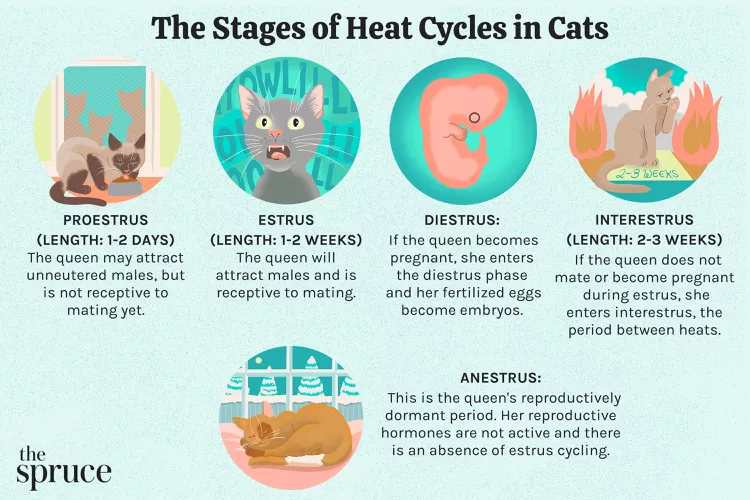
How Long Are Cats in Heat?
How long are cats in heat? Learn about the heat cycles of cats, also called estrus, as well as the reasons you should spay your cat.
Can Dogs Eat Raw Chicken Feet?
What are the potential health benefits of chicken feet for dogs? What are the risks?
Is Eucalyptus Safe for Cats?
Many products containing eucalyptus are not safe for cats, and it is important to be aware of the risks to your cat.
What You Need to Know About Homemade Cat Food
If you want to cook for your cat, make sure to read about the risks associated with homemade diets for cats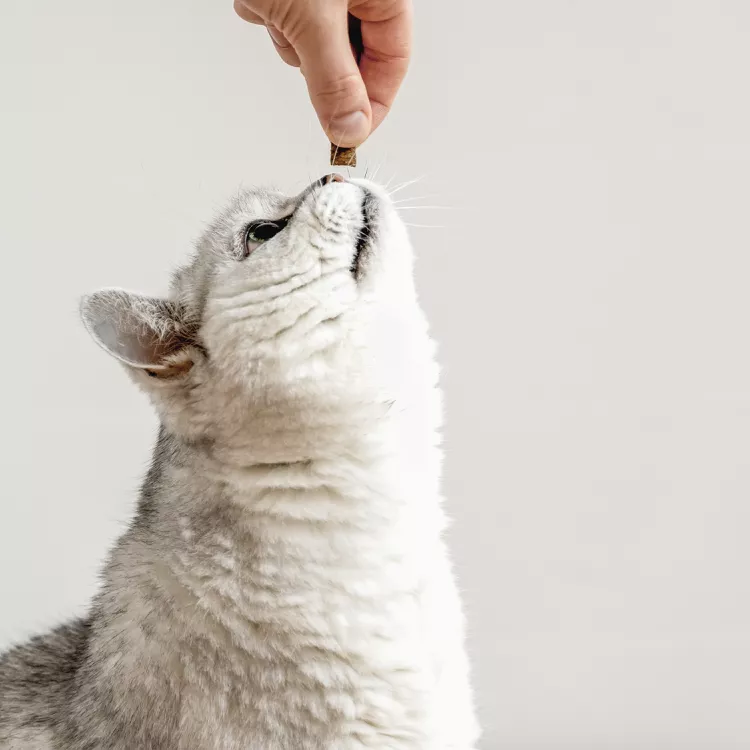
Can Cats Eat Peanut Butter?
Peanut butter is not toxic to cats, but it might not be the best choice of treat for them.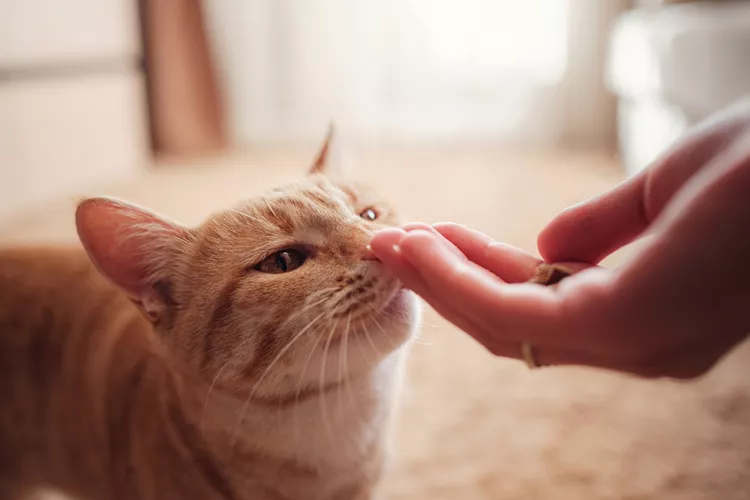
Can Cats Eat Cheese?
Can cats eat cheese? Is it healthy for them? How much can they eat and what should you do if you fear your cat has eaten too much cheese?
8 Flat-Faced Cats with the Cutest Smooshed Faces
These flat-faced cat breeds have a distinct and adorable appearance. Learn about their origins and traits, and the potential health risks tied to their unique facial structures.
Pictures and Facts About Bengal Cats and Kittens
Bengal cats are a cross between wild cats and domestic cats. Learn more about what they look like and pictures of this beautiful spotted breed.
Top 10 Big House Cats
Larger cat breeds, like Maine coons and savannahs, deserve just as much love as their petite counterparts. These big house cats tip the scales.
Cairn Terrier: Dog Breed Characteristics & Care
The cairn terrier is a spunky, affectionate, and intelligent dog from Scotland. The breed became famous when one played Toto in The Wizard of Oz. Learn about the temperament, history, health, and care needs of the cairn terrier dog breed.
Reasons Why Dogs Grind Their Teeth
Some dogs grind their teeth. Learn why dogs grind their teeth and if it can be harmful. Find out what to do about teeth grinding in dogs.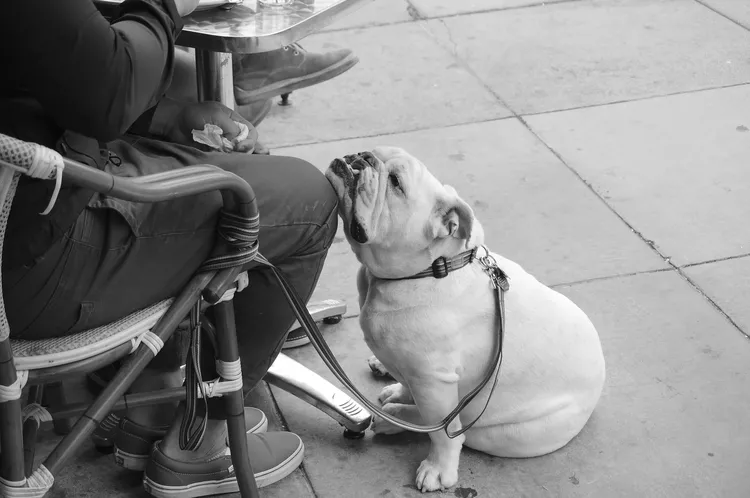
This Is Why Some Dogs Lean on People
Certain dogs really love leaning on their humans. What does this mean? Find out why dogs lean on people and if this is ever a problem.
Can Dogs Get Depression? How to Help Your Sad Dog
Can dogs get depression? Learn about the signs of depression in dogs and find out how to help your sad dog.